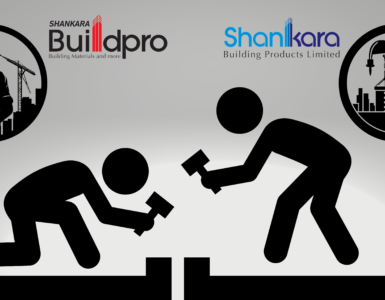DEAL IMPACT: HERO Journey after JOINT VENTURE Exit with HONDA
TRANSACTION BACKGROUND
On December 16, 2010, India-based Hero Group (Hero) and Japan-based Honda Motor Co. (Honda) signed an agreement to dissolve their partnership, thus putting an end to one of the most successful joint ventures in the Indian automobile industry. The companies decided to part ways owing to unresolved disputes, and their own plans for the Indian and international markets. Honda decided to exit the venture by selling its 26% stake to the Munjal family, the owners of Hero. Both the companies decided to part amicably, with Honda continuing to provide technological support to Hero till 2014, and Hero continuing to pay royalties to Honda.
The Munjals acquired the 26% held by Honda in the joint venture through their private holding arm Hero Investments, thereby bringing the ownership of Indian promoter & promoter group holding to 52% (Stake of Hero Investments enhanced to around 43% with this transaction). The transaction was completed for a valuation of 739.97 per share – at less than half of market price of 1,518.15 on the Bombay Stock Exchange (BSE).
Later In 2014, Hero Investments was merged with the listed Hero MotoCorp, thereby allowing PE investors to exit the company as any public shareholder.
MAIN REASONS FOR PARTING
Issue of exports:
According to the shareholder’s agreement signed in 1984, the joint venture was only for domestic production and consumption. The agreement was subsequent, modified to allow exports of limited products to a few countries, namely Sri Lanka, Bangladesh, Nepal, and Columbia. However, in 2008, when the issue of exporting the Indian JV’s products to other countries came up, Honda was of the opinion that Hero Honda will have to compete on its own since it could not influence its subsidiaries abroad to import the JV’s products. Honda’s subsidiaries are run very independently and decide which countries they want to source their products from. This was a bitter pill to swallow for Hero Honda.
Board representation:
Through the four Honda representatives on the board of Hero Honda, Honda had access to all the strategies & plans of Hero Honda, while Hero Honda had access to none of Honda’s plans. This, Hero Honda, had felt amounted to a conflict of interests.
Investment in R&D:
Hero Honda wanted to scale up its business & wanted to enter the next Growth phase by focussing on manufacturing its own products & Investing in its own R&D to which Honda was not comfortable.
Direct competitor:
Honda’s Indian subsidiary Honda Motorcycles and Scooters India Pvt Ltd (HMSIPL) decided in 2010 to launch motorcycles, the segment that formed over 70 per cent of Hero Honda’s sales. Hero Honda’s apprehension was that HMSIPL motorcycle will become a direct competitor to its largest selling bikes – Passion and Splendor. Also, this was against the terms of the agreement.
INDUSTRY ANALYSIS
Domestic market share (%)
| Two Wheeler Domestic Market Share (%) | ||||||
| FY10 | FY11 | FY12 | FY13 | FY14 | FY15 | |
| Hero MotoCorp | 48.1 | 44.7 | 45.2 | 42.90 | 41.3 | 40.2 |
| Honda motorcycles | 12.7 | 13.2 | 14.9 | 18.90 | 24.0 | 26.6 |
| Bajaj Auto | 19.1 | 20.5 | 19.1 | 17.90 | 14.2 | 11.1 |
| TVS Motors | 14.5 | 15.1 | 14.1 | 12.80 | 11.8 | 13.2 |
| Others | 5.6 | 6.5 | 6.7 | 7.50 | 8.7 | 8.9 |
| Source : SIAM, Capitalline database | ||||||
- Hero MotoCorp has seen as decline in its market share over the last 5 years from 48.1% in FY10 to 40.2% in FY15
- Hero MotoCorp has seen 5% CAGR growth in last 5 years as against close to 10% CAGR growth in the overall domestic market
FINANCIAL PERFORMANCE
| Consolidated Income statement – Hero MotoCorp Ltd | ||||||
| Particulars | FY11 | FY12 | FY13 | FY14 | FY15 | CAGR % |
| Net Sales | 19,401 | 23,579 | 23,768 | 25,275 | 27,538 | 9.2% |
| YoY Growth (%) | 21.5% | 0.8% | 6.3% | 9.0% | ||
| EBIDTA | 2,809 | 3,983 | 3,683 | 3,983 | 3,989 | 9.2% |
| EBITDA Margins (%) | 14.5% | 16.9% | 15.5% | 15.8% | 14.5% | |
| YoY Growth (%) | 41.8% | -7.5% | 8.2% | 0.1% | ||
| Depreciation & Amort. | 402 | 1,097 | 1,142 | 1,107 | 540 | |
| EBIT | 2,407 | 2,886 | 2,541 | 2,876 | 3,448 | 9.4% |
| EBIT Margin (%) | 12.4% | 12.2% | 10.7% | 11.4% | 12.5% | |
| YoY Growth (%) | 19.9% | -11.9% | 13.2% | 19.9% | ||
| Finance cost | 2 | 21 | 12 | 12 | 12 | |
| PBT | 2,405 | 2,865 | 2,529 | 2,864 | 3,292 | 8.2% |
| PBT Margin (%) | 12.4% | 12.1% | 10.6% | 11.3% | 12.0% | |
| YoY Growth (%) | 19.1% | -11.7% | 13.2% | 14.9% | ||
| Provision for Tax | 477 | 487 | 411 | 758 | 943 | |
| Net Profit | 1,928 | 2,378 | 2,118 | 2,103 | 2,365 | 5.2% |
| Net Profit Margin (%) | 9.9% | 10.1% | 8.9% | 8.3% | 8.6% | |
| YoY Growth (%) | 23.4% | -10.9% | -0.7% | 12.5% | ||
| Cah flow earnings | 2,330 | 3,475 | 3,260 | 3,210 | 2,905 | 5.7% |
| Financial Year ended March (Figures in INR Cr) (Source: Annual Reports ) | ||||||
| Hero MotoCorp – Historical Product Sales | |||||
| Particulars | FY11 | FY12 | FY13 | FY14 | FY15 |
| Product sales (No. of units ) | 54,02,444 | 62,35,205 | 60,75,583 | 62,45,960 | 66,31,826 |
| YoY sales growth (%) | 15.4% | -2.6% | 2.8% | 6.2% | |
| Source : Annual Report 2015 | |||||
KEY OPERATING HIGHLIGHTS
Domestic market:
- Hero MotoCorp has 40.1% market share in the domestic two-wheeler market
- Launched the upgraded models of Karizma, ZMR, Xtreme, Passion Pro TR, Splendor Pro Classic, Splendor iSmart, HF Deluxe Eco and Pleasure in FY15.
- The Company sold 6.63 million units in FY15 with YoY growth of 6.2%. Product sales grew on account of strong export sales and moderate domestic demand.
International Market:
- The Company has significantly shored up its global footprint since commencing the overseas journey in 2011, having a presence now in 22 countries.
- During FY15, exports saw 53% growth in sales volumes at 2, 00,140 units & the company received its single largest export order from Sri Lanka
- Forayed into Bangladesh in April 2014 and rolled out 11 popular motorcycles and scooters through 50 outlets. Joined hands with the Nitol Niloy Group of Bangladesh to set up its first manufacturing plant in this country.
- During FY15 the Company also launched Hero in Colombia with six best-selling models. The hero is the first Company to offer a five-year and a four-year warranty in Bangladesh and Colombia, respectively.
KEY FINANCIAL HIGHLIGHTS
- Net Sales in FY15 stood at Rs 27,538Cr & has shown CAGR growth of 9.2% over the last 5 Years
- EBITDA have seen CAGR growth of 9.2% over the last 5 years with EBITDA margins at around 16%
- PAT escalated in FY15 to Rs 2,365Cr with YoY growth of 12.5% owing to efficient operational architecture and higher realisations.
RECENT NEWS: BAIN CAPITAL SELLS STAKE IN HERO MOTOR CORP
In Aug 2015, Bain Capital sold its remaining 1.5% stake in Hero MotoCorp for Rs 800Cr. Besides, Bain Capital has earned Rs 320 crore in dividends since 2011. The PE firm first sold 2.8 % in the company in June 2014, earning Rs 1,481 crores, sold 4.3% stake in the second tranche in November 2014 earning Rs 2,500 crore and along with the expected proceeds from the third round and dividends so far, its returns from the investment will be about Rs 5,100 crore. Bain Capital in June 2011 had invested Rs 2500 Cr in Hero MotoCorp for 8.6% stake.
“Cash on Cash” Return earned by Bain Capital– 2.0x
Note: Cash on Cash return is simply how much the investor received in proceeds divided how much it initially invests in the company.
FUTURE PLANS
- Plans to invest over 5000 crores to enhance capacities and strengthen brands across domestic and global markets over the next few years.
- Hero MotoCorp’s four manufacturing facilities at Dharuhera, Gurgaon, Haridwar and Neemrana (which was commissioned in FY15) have a total capacity of 7.75 million units. The Neemrana plant is being expanded further, and once complete, the overall capacity will be over 8 million units.
- Entered into an MoU with the Government of Andhra Pradesh for setting up of Manufacturing Plant in Sricity in Chittoor District of Andhra Pradesh. The plant with an investment of Rs.1, 600 crores will have an annual production capacity of around 1.8 million units of two wheeler.
CONCLUSION
Post the JV Break up, Hero MotoCorp has seen a consistent drop in its domestic market share over the last 5 years from 48% in FY10 to 40% in FY15. On the contrary, Honda Motors with 26% market share has significantly closed the gap with Hero after the two broke their relationship four years ago. Also since the JV exit in 2011, Hero MotoCorp has seen only 5% CAGR growth in its production volume in the domestic market & has had a poor domestic performance due to sluggish rural demand leading to declining sales in its economy bikes such as Splendor & Passion, which account for 70% of its volume. This shows us that the growth strategies adopted by Hero towards tapping the mass market has not paid any dividend of late and there is also a need to relook at its growth strategies to showcase accelerated growth.
The transition phase that Hero entered post exit of Honda is likely to continue for a longer period of time as it has earmarked significant investment in its R&D, Capacity enhancement & Brand building initiatives.
With rising competition in the low-margins entry-level segment, in a bid to grow faster than the market, Hero MotoCorp will be required to grab higher market share by launching new innovative products even if this means at the cost of margins in the mass market segment, where already it is losing its appeal. Also for margin expansion to happen, Hero will have to focus on introducing high-margin high-end products which have a better appeal to the customers.
As far as exports are concerned which formed the basis of JV split, Hero MotoCorp has taken no. of initiatives in the last 2 years to ramp up its exports & is now present in 22 countries. With a premiumization strategy of introducing high-end variants, the exports push is likely to continue going forward.




